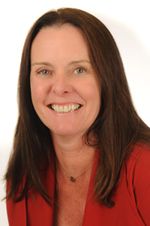When Rare Becomes Common
Two topics in Pharm Exec this month-rare disease research and women in healthcare leadership-share a "common" thread.
Seven Years. That’s the average time it takes an individual to get a correct diagnosis for a rare disease in the United States. In a story of a rare disease that should have been discovered by a screening that went awry, it took four months, parents unwilling to accept their doctor’s colic diagnosis, and a work-up at CHOP to save a four-month-old heading into liver failure from tyrosinemia type I, a hereditary disorder found in one in 100,000 to 120,000 births worldwide. This disease can be discovered through a newborn blood screening and treated with drugs. The mission of the parents of this story-whose son lived-is to make sure all newborns are screened and then have access to these drugs, no matter the geographic location or cost.
Thus begins the journey of many patients, parents and loved ones to support others affected by a disease that has forever changed their lives.
The definition of rare disease in the United States is one that occurs in less than 200,000 Americans at a given time. In Europe, a disease is characterized as rare when it affects fewer than one in 2,000.
We know that even “common” diseases such as breast cancer have phenotypes or subtypes. A drug for cystic fibrosis only works in a subpopulation of those diagnosed with a certain gene. And people that take statins who have a certain genetic profile are at increased risk to die from muscular waste.
I learned this at a conference from a researcher who specializes in genomics. He said that if he mapped each person’s genetic code in that room (about 250) and one of their children, that would stretch from the Earth to Mars. While the human genome has been mapped, each person’s genetic profile is unique. So in another example of an 18-month-old girl, the researcher took the code from both parents and child and discovered, via computer analysis in about 50 hours, she had a single gene variant that was causing her muscle degeneration.
Fortunately, that too was cured by addressing the specific gene’s mechanism.
Research and technology continue down this road every day, as does the resolve of patients and loved ones diagnosed with yet another rare disease. But as we think this through, that means each of us has a variant. Be it a drug on the market that has a me-too, but one works better for your variant, or a drug that you should not be taking because of the variant, or a disease that is discovered because of the variant. All the individualized variants are rare, but then the rare becomes the norm.
However, there remain many barriers to discovering and treating rare diseases. Julian Upton’s article on the International Rare Diseases Research Consortium discusses the barriers and how it is working with pharma and others to break through them.
Another bygone rarity
What else that was once rare and now is more common with time, investment and commitment is women working in professional positions. As a group, women clearly have made strides in the professional world in the last 50 years and hold executive positions in many fields. But we do know that women participating in the STEM professions is still low, and that representation of female executives in pharma is still rare.
This is why Pharmaceutical Executive recognizes each year the Healthcare Businesswomen’s Association choice for Woman of the Year. This year’s honoree is Bahija Jallal, PhD, executive vice president, AstraZeneca, and head of MedImmune.
Jallal’s story is moving, and as you’ll read, she had the full support of a mother who believed in all of her children and their abilities and letting them know there were no barriers to their success. Jallal recently spoke at the second annual International Day of Women and Girls in Science conference at the United Nations Headquarters in New York, and is president of the board of directors of the Association of Women in Science.
Some may believe that the time it has taken for rare disease research to advance is too long, as some argue that it still is taking too long for women to break glass ceilings. Each group, rare disease and women get their own recognition day just 10 days apart-Rare Disease Day is February 28 and International Women’s Day, which focuses on women’s rights, is March 8.
With time, investment and commitment, it may soon come to pass that these days won’t need to be recognized because they will move from needing attention to just being a common occurrence.

Lisa Henderson is Editor-in-Chief of Pharm Exec. She can be reached at lisa.henderson@ubm.com. FollowLisa on Twitter: @trialsonline
